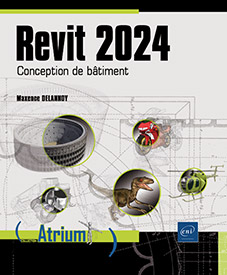AutoCAD : l'API .NET est parfois un peu compliquée
AutoCAD propose de nombreuses API : ObjectARX, .NET, ActiveX/COM, AutoLISP. Il faut en plus maintenant ajouter l'API Javascript qui est une nouveauté d'AutoCAD 2014. Et parfois, ce qui s'avère très simple dans une des API se révéle très compliqué dans une autre. Prenons par exemple le cas du zoom étendu.
Avec l'API ActiveX et VBA, il suffit de faire :
ThisDrawing.Application.ZoomExtents
Avec l'API .NET, c'est un peu plus compliqué :
Document doc = Application.DocumentManager.MdiActiveDocument;
Database db = doc.Database;
using (Transaction tr = db.TransactionManager.StartTransaction())
{
db.UpdateExt(true);
Point3d min, max;
var cvport = (short)Application.GetSystemVariable("CVPORT");
if (db.TileMode || cvport == 0)
{
// Espace objet ou espace objet flottant
min = db.Extmin;
max = db.Extmax;
}
else
{
// Espace papier
min = db.Pextmin;
max = db.Pextmax;
}
using (ViewTableRecord view = doc.Editor.GetCurrentView())
{
double screenRatio = (view.Width / view.Height);
Matrix3d matDCS2WCS = Matrix3d.PlaneToWorld(view.ViewDirection);
// Décalage de l'origine
matDCS2WCS = Matrix3d.Displacement(view.Target - Point3d.Origin)
* matDCS2WCS;
// Rotation de la vue
matDCS2WCS = Matrix3d.Rotation(-view.ViewTwist, view.ViewDirection, view.Target)
* matDCS2WCS;
Matrix3d matWCS2DCS = matDCS2WCS.Inverse();
// Calcule la boite englobante dans le SCA
var spaceExtents = new Extents3d(min, max);
var corners = new[]
{
new Point3d(spaceExtents.MinPoint.X, spaceExtents.MaxPoint.Y,
spaceExtents.MaxPoint.Z),
new Point3d(spaceExtents.MaxPoint.X, spaceExtents.MaxPoint.Y,
spaceExtents.MaxPoint.Z),
new Point3d(spaceExtents.MaxPoint.X, spaceExtents.MinPoint.Y,
spaceExtents.MaxPoint.Z),
new Point3d(spaceExtents.MinPoint.X, spaceExtents.MinPoint.Y,
spaceExtents.MaxPoint.Z),
new Point3d(spaceExtents.MinPoint.X, spaceExtents.MaxPoint.Y,
spaceExtents.MinPoint.Z),
new Point3d(spaceExtents.MaxPoint.X, spaceExtents.MaxPoint.Y,
spaceExtents.MinPoint.Z),
new Point3d(spaceExtents.MaxPoint.X, spaceExtents.MinPoint.Y,
spaceExtents.MinPoint.Z),
new Point3d(spaceExtents.MinPoint.X, spaceExtents.MinPoint.Y,
spaceExtents.MinPoint.Z)
};
var ext = new Extents3d();
for (int i = 0; i < corners.Length; i++)
{
Point3d p = corners[i].TransformBy(matWCS2DCS);
if (i == 0)
ext = new Extents3d(p, p);
else
ext.AddPoint(p);
}
double width = ext.MaxPoint.X - ext.MinPoint.X;
double height = ext.MaxPoint.Y - ext.MinPoint.Y;
if (width > (height * screenRatio)) height = width / screenRatio;
view.Height = height;
view.Width = height * screenRatio;
view.CenterPoint = new Point2d(
(ext.MinPoint.X + ext.MaxPoint.X) / 2,
(ext.MinPoint.Y + ext.MaxPoint.Y) / 2
);
doc.Editor.SetCurrentView(view);
}
tr.Commit();
}
Ouch ! La puissance a un prix. Heureusement, rien ne nous empêche d'utiliser l'API ActiveX en .NET :
Object acadObject = Application.AcadApplication;
acadObject.GetType().InvokeMember("ZoomExtents",
BindingFlags.InvokeMethod, null, acadObject, null);
|
Besoin d'un développement spécifique pour AutoCAD ?
Développement de compléments à AutoCAD et aux autres logiciels Autodesk (AutoCAD Electrical, AutoCAD Mechanical, Inventor, Revit, Vault, Navisworks...). C#/VB/.NET, C++/ObjectARX, AutoLISP, VBA.
Migration de vos projets VBA en .NET, intégration RealDWG dans vos applications, développement sur plateforme AutoCAD OEM et Inventor OEM.
Assistance technique AutoCAD, Inventor, Revit, Vault.
Maxence DELANNOY - Tél. : 06.46.40.75.66 - maxence.delannoy@wiip.fr
|
|


Add new comment